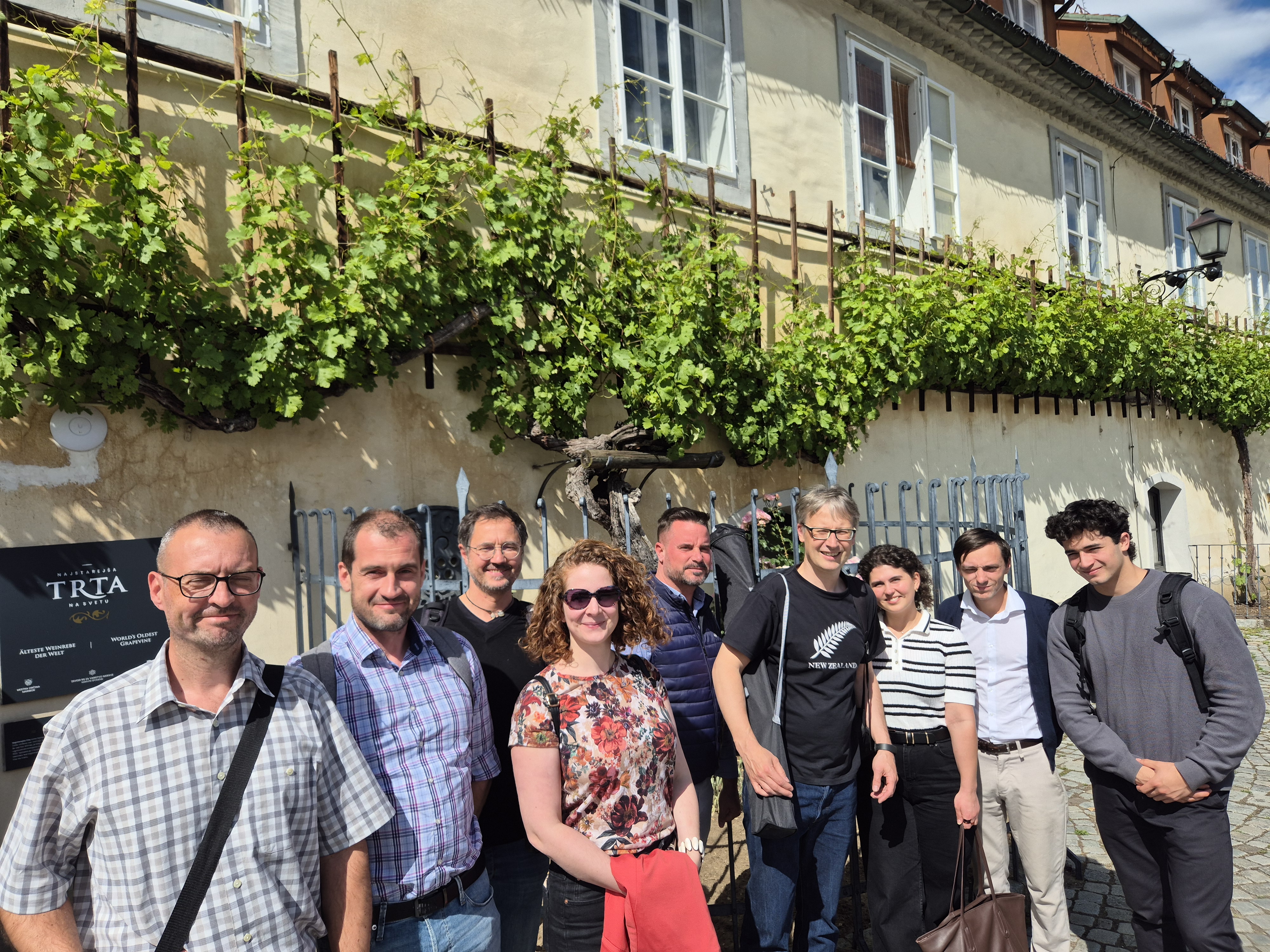Hydrogen Strategy Discussions: BRT Joins H2SCALE Meeting in Slovenia
BRT members Antoine Bercy and Dr. Viktoriia Chubur recently attended an H2SCALE Project meeting in Slovenia!
Read on for a firsthand account of the trip - from Antoine’s perspective!
The H2SCALE project supports the transition toward renewable energy by fostering the development of local hydrogen ecosystems in the Danube Region, particularly in Hungary, Slovenia, the Czech Republic, and Germany. In response to EU climate and energy goals, the project focuses on mapping production capacities and consumption needs for green hydrogen, integrating hydrogen into local energy and transport systems, and identifying investment opportunities. The initiative also addresses knowledge gaps and top-down planning approaches by promoting stakeholder engagement at the municipal level. It aims to strengthen regional innovation capacity, involve local actors from both public and private sectors, and increase public acceptance of hydrogen technologies.
Dr. Viktoriia Chubur and I recently participated in the in-person meeting for the H2SCALE Project in Maribor, Slovenia, hosted by ENERGAP (Energy and Climate Agency of Podravje). In line with our environmental commitment, we took the train from Prague - a comfortable 8-hour journey through the beautiful scenery of the Alpine mountains.
Overall, this meeting focused on reviewing the progress of the project. In particular, we discussed the differing needs of each participating country regarding hydrogen infrastructure development. These exchanges aimed to strengthen cooperation among partners and improve our understanding of both current challenges and future requirements for large-scale hydrogen deployment.
We shared updates on the various work packages to ensure a smooth completion of the project. Regional analyses, covering legal, infrastructural, social, and financial factors, were reviewed alongside case studies of successful hydrogen investments. This allowed us to compare the state of hydrogen readiness across countries and identify strategic next steps.
We also discussed the formation of a consortium for future projects, with each country defining specific objectives. This forward-looking approach helps refine investment proposals for a more efficient and accelerated rollout of hydrogen technologies. Survey results from each partner country were presented, revealing diverse national priorities and constraints:
-
Hungary: Due to grid limitations, offloading excess renewable energy is restricted. Long-term hydrogen storage is seen as a potential solution.
-
Slovenia: Energy independence, particularly in times of crisis, is a key driver for hydrogen deployment.
-
Germany: While advanced in many ways, the country faces regulatory and institutional barriers that slow the adoption of new technologies.
-
Czech Republic: With a strong industrial base and high hydrogen demand, the country is ready for hydrogen use but has limited renewable energy potential.
Hungary also proposed the creation of a “living lab” based at a university, where hydrogen technologies can be tested in a real urban environment. The Czech University of Life Sciences Prague (CZU), supported by the BRT communications team, will handle the communication strategy to help promote and explain the project to a wider audience. We also reviewed possible funding sources to support the long-term sustainability of the initiative.
After the meeting, the group gathered for a photo in front of the world’s oldest grapevine. This 450-year-old Žametovka (Modra kavčina) vine, still bearing fruit annually, is listed in the Guinness Book of Records! We were fortunate to have a free day to explore the center of Maribor, a city along the Drava River and surrounded by rolling hills and vineyards. We began in the main square, home to the old town hall, and visited key landmarks like the cathedral and castle. In the afternoon, we walked through Mestni Park, located north of the center, which features an interesting aquarium and terrarium with fish and reptiles from around the world. Later, we hiked up Piramida Hill, a peaceful trail through vineyards offering panoramic views over the city. At the summit, the ruins of a former castle and a small chapel made for a serene and scenic conclusion to our visit.
Stay tuned for more updates about the H2SCALE Project!
For more details on BRT activities, subscribe to our newsletter or follow us on social media for regular updates and highlights!


